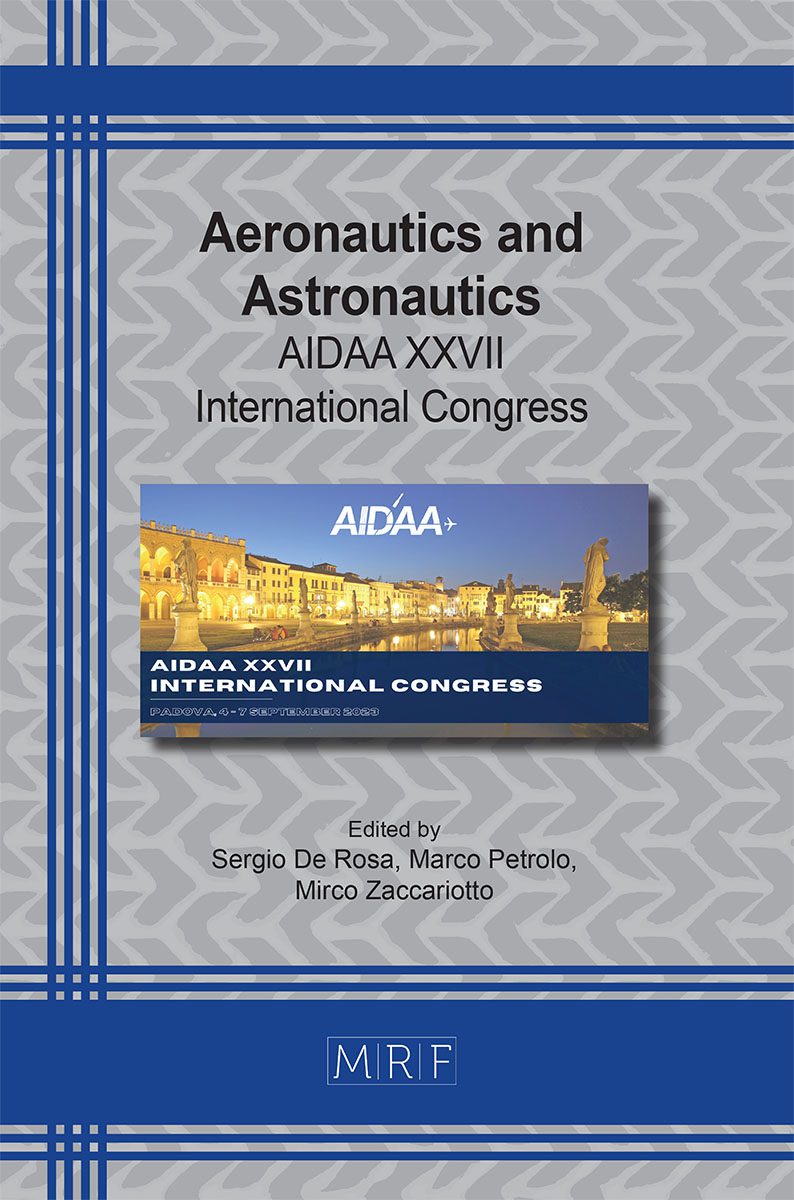Electro-thermal dynamic simulations and results of a deorbiting tethered system
G. Anese, G. Colombatti, A. Brunello, A. Valmorbida, G. Polato, S. Chiodini, E.C. Lorenzini
download PDFAbstract. Deorbiting techniques with small or better no propellant consumption are an important and critical field of space studies for the mitigation of orbital debris. Electrodynamic tethers (EDTs) are of particular interest because they make possible to deorbit space debris by exploiting the Lorentz force that is provided by the current flowing in the tether thanks to the interaction of the system with the Earth’s magnetosphere and the ionosphere. This paper focuses on the differences between two software packages built at the University of Padova (FLEX and FLEXSIM) and their results in simulating various deorbiting scenarios. Both FLEXSIM and FLEX simulate the electro-thermal behaviour and the dynamics of an EDT. However, while the first one has the simplifying assumption that the tether is always aligned with the local vertical, the second one considers also the overall system attitude with respect to the radial direction and the tether flexibility. The computational times of these S/W are very different and it is important to understand the scenarios that are more appropriate for their use. Results aim to show the impact of different solar activity (simulations are done at different epochs) and lengths of conductive and non conductive segments of tether, in the range of a few hundreds of meters, on the total re-entry time. As expected, deorbiting is faster for high solar activity and conductive tether length but the performance must be balanced against the dynamics stability. The issue of stability over the deorbiting time is evaluated numerically for specific cases by using FLEX.
Keywords
Space Tethers, Electrodynamics, Numerical Simulations, Satellites Deorbiting
Published online 11/1/2023, 4 pages
Copyright © 2023 by the author(s)
Published under license by Materials Research Forum LLC., Millersville PA, USA
Citation: G. Anese, G. Colombatti, A. Brunello, A. Valmorbida, G. Polato, S. Chiodini, E.C. Lorenzini, Electro-thermal dynamic simulations and results of a deorbiting tethered system, Materials Research Proceedings, Vol. 37, pp 534-537, 2023
DOI: https://doi.org/10.21741/9781644902813-117
The article was published as article 117 of the book Aeronautics and Astronautics
![]() Content from this work may be used under the terms of the Creative Commons Attribution 3.0 license. Any further distribution of this work must maintain attribution to the author(s) and the title of the work, journal citation and DOI.
Content from this work may be used under the terms of the Creative Commons Attribution 3.0 license. Any further distribution of this work must maintain attribution to the author(s) and the title of the work, journal citation and DOI.
References
[1] M.L. Cosmo, E.C. Lorenzini, Tethers In Space Handbook, Third ed., Smithsonian Astrophysical Observatory, Cambridge (Massachussets), 1997.
[2] Information on https://etpack.eu/e-t-pack-f/.
[3] J. Picone et al., NRLMSISE-00 empirical model of the atmosphere: Statistical comparisons and scientific issues, J. Geophysical Research: Space Physsics, 107 (2002). https://doi.org/10.1029/2002JA009430
[4] D. Bilitza, B.W. Reinisch, International reference ionosphere 2007: Improvements and new parameters, Advances in space research, 42 (2008). https://doi.org/10.1016/j.asr.2007.07.048
[5] M. Mandea et al., International geomagnetic reference field—2000, Physics of the Earth and planetary interiors, 120 (2000). https://doi.org/10.1016/S0031-9201(00)00153-9
[6] M. Sanjurjo-Rivo et al., Efficient Computation of Current Collection in Bare Electrodynamic Tethers in and beyond OML Regime, J. Aerospace Engineering, 28 (2015), https://doi.org/10.1061/(ASCE)AS.1943-5525.0000479
[7] Liu, L. et al., The dependence of plasma density in the topside ionosphere on the solar activity level, Ann. Geophys., 25 (2007), 1337–1343. https://doi.org/10.5194/angeo-25-1337-2007












